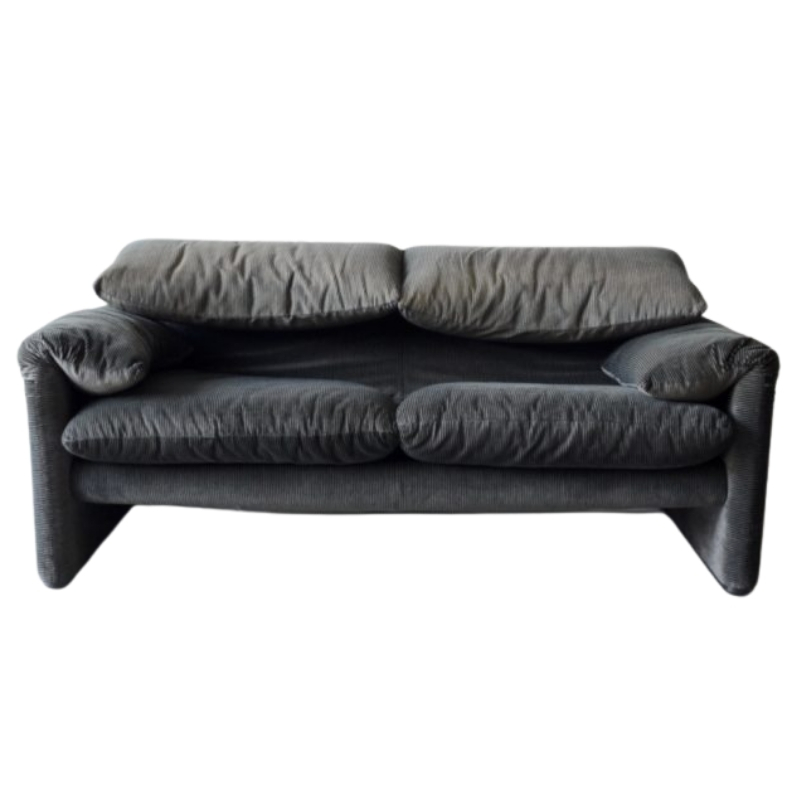.
So many people think oil is a fix all for all manner of furniture. They should stop at teak and cricket bats. I bought an ercol table just today with the unmistakeable smell of teak oil wafting from it cos some chimp couldn't or wouldn't either do it properly or leave it alone. On rosewood veneer lots of white spirit should get the oil out, then off to the french polisher
Daniel, it's possible
that it was sanded with too course a grade of sandpaper and oil applied sloppily and/or in excessive amounts. Paulanna's suggestion of removing excess oil with white spirits is a good approach. If the stuff gets too sticky, you can up the ante a bit by trying naphtha instead. The process requires some elbow grease. After, you should be able to better assesss the smoothness of the surface.
Rosewood in good condition can be sanded to P400 and beyond to produce a silky surface that hardly needs any finish at all to look good. Oil finishes should always be used according to the standard protocol of wetting the surface evenly, allowing to penetrate for 15 minutes, rubbing off anything that remains completely with clean cotton rags, and letting it dry for 24-48 hours before subsequent oiling or waxing.
Much experience
I have had a vast amount of experience with Walnut, Rosewood and other woods such as teaks.
Depending on the veneer thickness of course, the best solution is to use a special oil that never hardens.
the reason you want this is because any oil or finishes that get into the surface and fully harden do just that - turn very hard and make the wood brittle.
Instead, use a "finish remover". Once that is done, sand (depending on thickness of veneer start with 120, then 240 and finally 320 - but if the veneer is thin start with 240 and take your time).
Wipe through with mineral spirits and allow to dry for two days. Once this is done use "waterlox". First coat thin, second coat medium followed by three further coats. Allow full drying between coats.
It will look just amazing, bringing the wood not only to life, but it will look the way it was intended - rich, oily and perfect.
Finally, it will remain 98% solid which means it will always have a slight elastic quality to it, completely repeal all waters and most wines etc. and best of all, if it gets scratched, you only need wipe on a little waterlox and let it dry and you will never know it was ever scratched.
I promise you after dozens of refinishes there is nothing like it anywhere and I use if for all my walnut and Rosewood.
It is expensive - but your best is worth the best.
Thank you all
It's the oily finish which I'm unhappy about. I just found out that he stripped it, then used Danish oil. No sanding.
I looked at Waterlox, and it seems that it's not available in the UK.
Is it possible to get a good finish with wax after I have used the white spirit? I've tried this in the past with little success.
Tempted to try and french polish, but am a little hesitant as I have not tried it before.
.
Yuck. I would bite the bullet and take it to a polisher. They can do wonders - a good one will be able to really bring that figuring out. For rosewood a lot of polishers use garnet polish (a darker french polish) and also stains to enhance the contrast.Once the oil is out it may look quite a lot lighter. The original finish was in all probability a medium shellac / french polish one, or possibly a cellulose like one although you'd see evidence of that as it would have needed to be stripped chemically - or maybe the previous owner did do that? If its to sell a tip top finish will get it flying out the door. Why give commercially produced furniture an amateur finish?
You could try a wiping varnish...
I found this on the internet ages ago when I had the same problem. It works well and is virtually foolproof! You can also wax on top of the finish if you want to.
"Chose a polyurethane varnish (either gloss or satin).
Turn it into a wiping varnish by thinning it 50/50 with white spirits. To get a faster build, thin the varnish less. The less you thin the varnish, the more you increase the possibility of brush marks and bubbles curing in the finish. I suggest you begin with one part thinner to two or three parts varnish, and see how it feels to you. You can always adjust the ratio as you are applying the finish.
The most foolproof is to apply the finish just like you do an oil finish. Wipe or brush the finish onto the wood, keep it wet for a few minutes until no more dry spots develop, then wipe off the excess with a cloth, leaving the surface just barely damp. Let it dry then lightly sand using a very fine sandpaper. Continuing with the same steps, apply as many coats as you need to achieve the look you want."
Polishers
Haven't needed one for a few years, the guy I used to use in Bethnal Green has disappeared, McGuire I've heard are good though. If you know anyone in Alfies ask them where the guy who used to be next door went to he was really good. Any should be able to do it perfectly well. IME you get two types, the antique restorer type and then the sort who may do more commercial and on -site work, boardroom tables and that kind of thing. Both are fine and if you don't need woodwork doing the second are cheaper and quicker.
.
All such good advice, theres a big difference being getting it done right and padding on your own shellac, which can still look good.
But for the love of God, what was that person thinking? You didn't buy it from the old Spanish lady with a sideline in restoring frescos did you?
Hahaha, she wants royalties!
http://www.bbc.co.uk/news/world-europe-19674622
Nothing against a French polish, but...
is it a period-appropriate finish for mid-century furniture? It's an honest question, I really don't know.
Additionally, I think that most prepared oil finishes available today are technically "wiping varnishes" in that they contain resins other than drying oils. Including both Waterlox and the ubiquitous Watco variants.
Good question tktoo.
I've never been a fan of mid-mod high gloss sticks, unless they are rosewood, or another wood specie of its ilk. I think that this piece deserves to be frenched, and it will be a great project to learn a new technique. Before and after snappies would be divine.
French me,
Aunt Mark
If you need any help, please contact us at – info@designaddict.com









